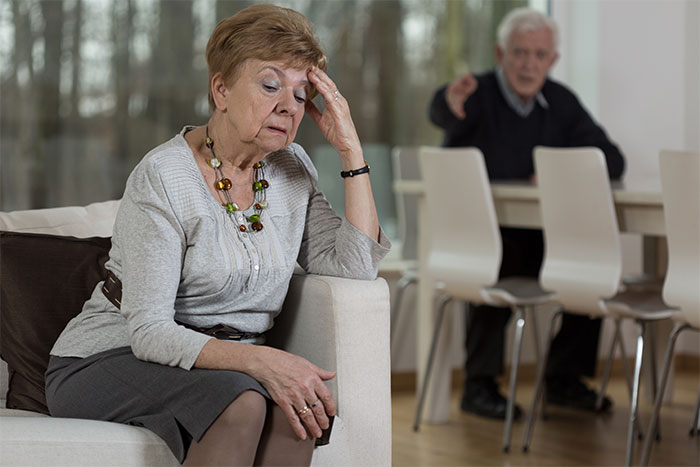12 Unique Ways Those with Dementia Express Pain

Joe is often confused, forgetful, disoriented, and struggles with communicating his needs and feelings. Sometimes he cries and is easily agitated for no apparent reason. He spends much of the day watching television and is reluctant to move around. Lately he hasn't been sleeping well. Joe has dementia, and has trouble verbalizing when he is in pain.
His wife Marie is frustrated and tired. She has been caring for him for the past five years and has seen a decline. She used to be able to anticipate his needs, but his unpredictable behavior is confusing to her. For those with dementia translating their actions are the key to understanding their issues, including pain. Unfortunately, the inability to communicate results in misunderstanding of needs and ultimately under-treatment of the discomfort.
"Pain is expressed in individual, and sometimes conflicting ways. People with dementia often express their pain with changes in behaviors, yet the cause of the change can be illusive," explained Ottilie Parsons, RN, BSN, community educator at Angelic Health. "Misdiagnosing pain can lead to inappropriate treatments such as antidepressants or antipsychotics which can have serious side effects, don't address pain, and may lead to additional suffering."
In addition to grimacing, moaning, and crying out, people with dementia may express pain in different ways from the rest of us. These can include:
- Guarding a particular body area, or not moving
- Limited range of motion or slow movements
- Restlessness
- Withdrawn social behavior
- Lethargy or increased sleep
- Disrupted or restless sleep
- Decreased appetite
- Increased confusion
- Anger, aggression, irritability, or agitation
Assessing pain in people with dementia is an important skill that takes time and effort to learn. In a recent study found in the "Journal of Pain and Symptom Management," it was found that patients in nursing facilities who could communicate their needs received pain medication 75.1% of the time, whereas patients with severe dementia only received pain medication 43.8% of the time. Do people with severe dementia have less pain? Not likely. But they are dependent on caregivers to properly assess their needs and provide them with treatment.
In a separate study it was found that 32.88% of people in nursing homes with dementia received antipsychotic medications whereas antipsychotic usage is only 12% outside of facilities. The prevalence of antipsychotic medication usage increases as the dementia progresses. There are several studies suggesting that pain could be an underlying driver of some behavioral issues rather than emotional or psychiatric issues.
Common causes of pain can include:
- Constipation
- Urinary tract infections
- Sitting or lying in one position for too long
- Pressure sores
- Arthritis
- Osteoporosis
- Old injuries such as hip fractures
- Undetected or untreated injuries
- Headache or migraine
- Back problems
- Foot problems
- Dental problems
- Diabetes
- Infections
Treatments of pain don't always include medication. Some of the non-drug treatments that can be very effective are massage, heat or cold packs, gentle exercise, stretching, and relaxation. Whether it is medication or other non-drug treatments, having a comprehensive plan to identify and address pain in those with dementia is critical.
To learn more about how palliative or hospice care can help address the pain needs of your loved one, call 609-822-7979 or visit www.Angelic.health.